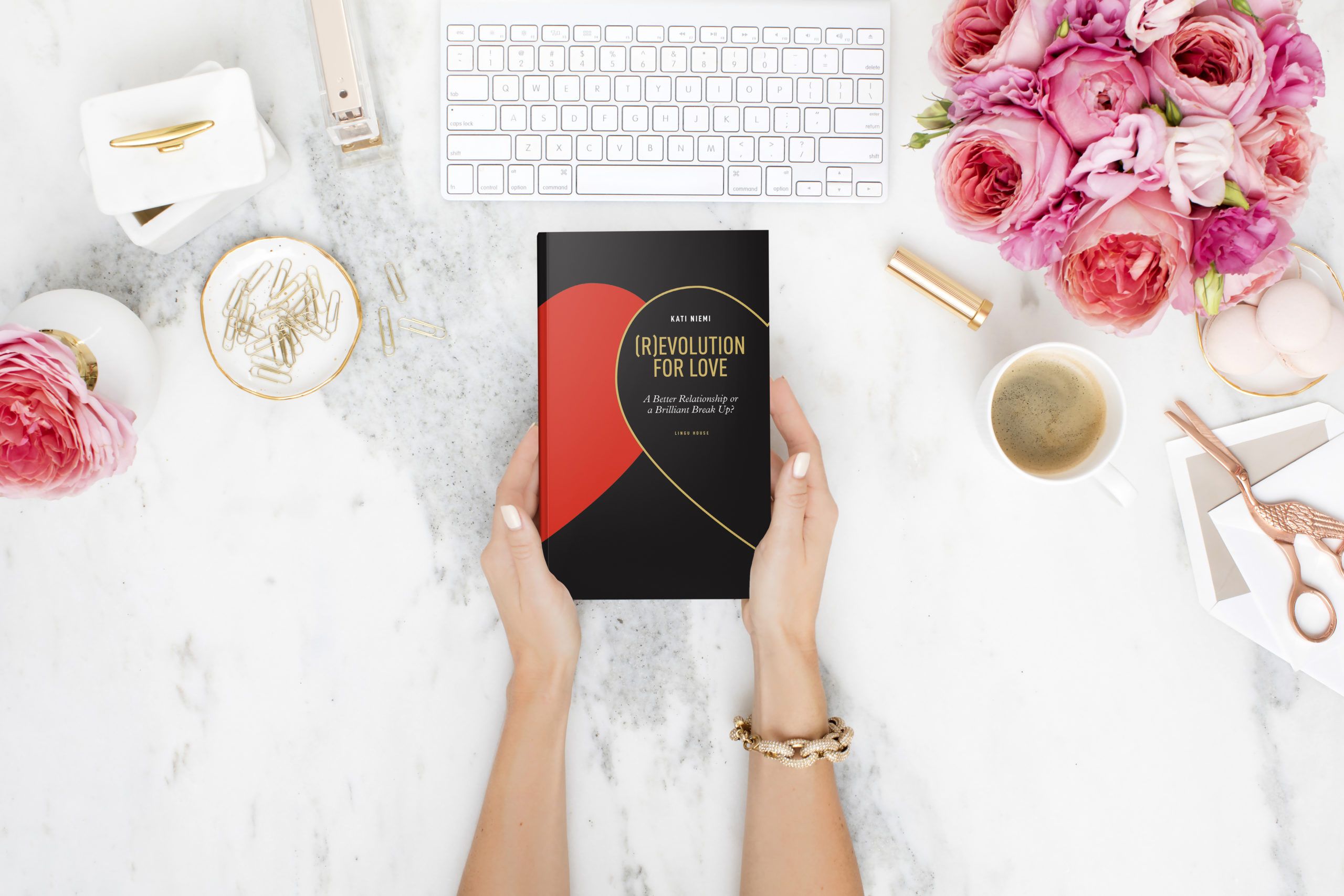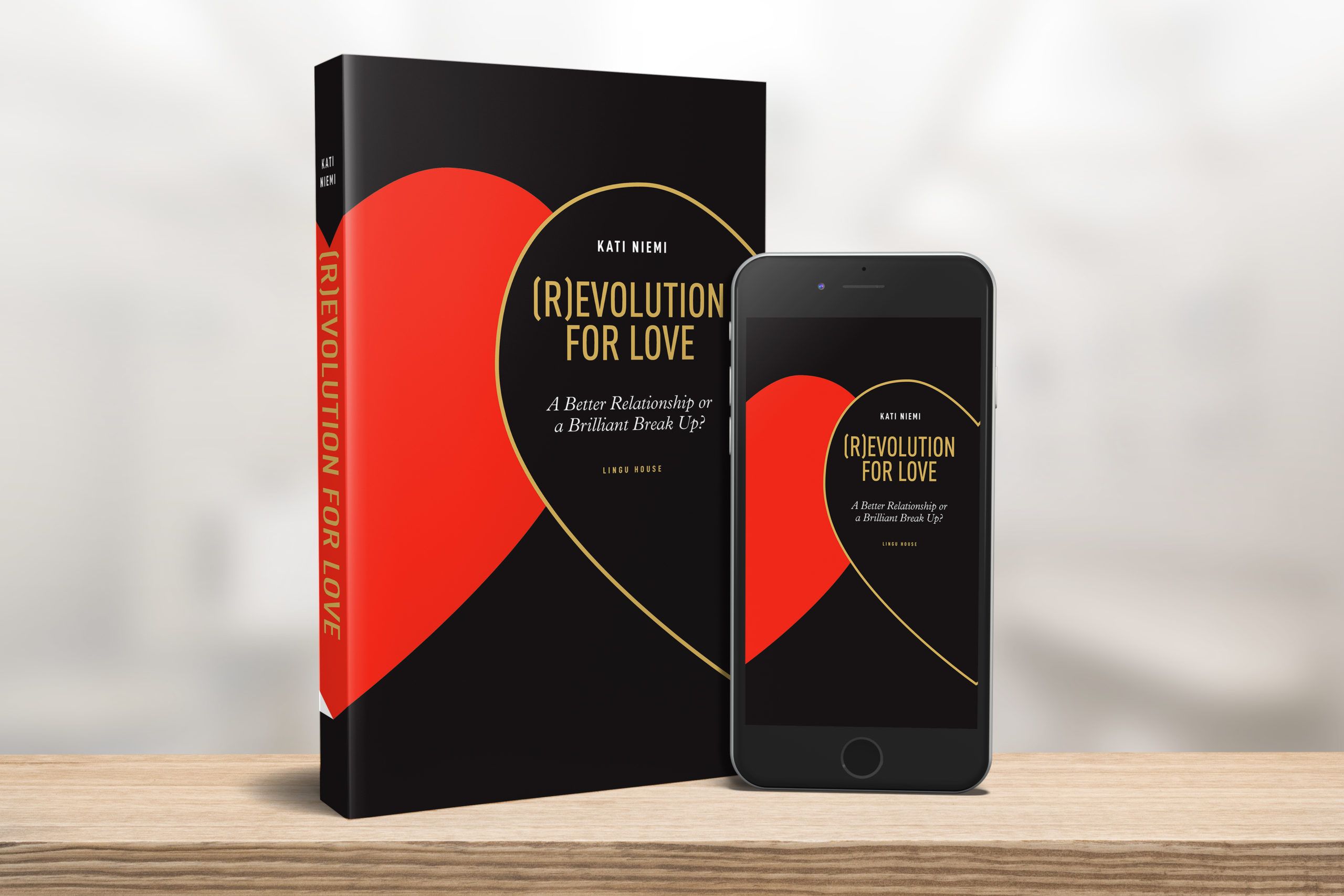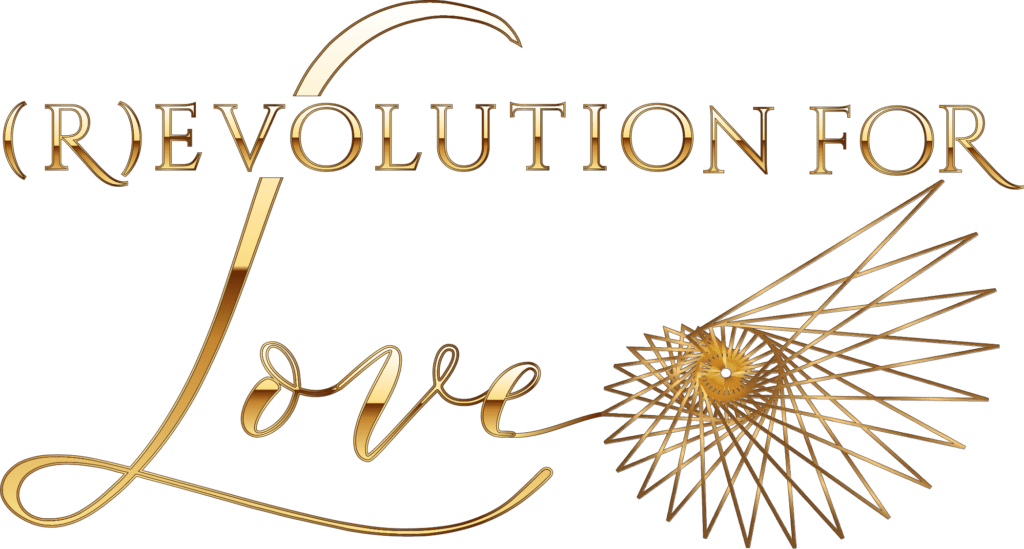At first glance, it is easy think that a good life all down to positive thinking while sadness is a negative thing. I recently discussed the dark side of positive thinking and willpower in this (R)evolution for Love blog post: When positivity becomes toxic. This blog post is related to the same theme. This time, I want to talk about the reasons why conscious grieving and the acceptance of difficulties is so important. The short answer is that they are an integral part of a rich life and genuinely positive thinking.
Painful feelings play a vital role. That’s why listening to them and allowing ourselves to feel them is paramount. Conscious grieving is a practice based on genuinely positive and humane thinking. How to practice conscious grieving? How to master it so that we are ready for that inevitable rainy day?
As a first aid, you should use the natural remedy we all have: breathing. You can read about correct breathing in this article: Why is breathing important to our health?
Fear of pain only makes it worse
The fear of change can hurt as much as the pain you are already familiar with. For this reason, too many would rather stay put and let their mood grow darker and darker. They prefer letting their feistier partner call all the shots than taking the risk and leave. “Better the devil we know than the one that we don’t”.

Online Coaching
Happy to help you! Welcome to book your online coaching session with the certified Coach, NLP Trainer, and Clinical Hypnotherapist Kati Niemi! Please select your
The greater the stress, the easier it is for the human mind to forget that risk can also be an opportunity for a great victory. But sometimes, even the possible jackpot is not enough of a motivation to take the risk. As a result, many wait for the pain to grow even worse until it gets too much. To recap: for the highly evolved human brain, pain is a greater motivator than happiness. Therefore, experiencing and dealing with pain consciously can prove a more valuable exercise than pursuing a positive goal
While we shouldn’t let ourselves get too preoccupied by negative thoughts, it is necessary to let them in occasionally.
It really is worth the trouble. The pain is there for a reason. Pain has something important to tell us. Negative feelings try to help us avoid what causes that feeling. To be clear, the purpose of a negative feeling is not to make us avoid that feeling itself, but what causes it. Don’t kill the messenger even if their message is not what you want to hear. How else could our subconscious communicate with our conscious mind except through real emotions? So let the messenger in and listen to what it has to say.
What is the positive purpose behind the negative feeling?
Sometimes a negative feeling is caused by a legitimate external or internal factor. For example, bereavement after the death of a loved one or losing one’s job are reasons easy to understand and accept. Sometimes, however, the negative feeling appears to come from nowhere: “I’m afraid of failing in a work project because I’m afraid of losing my job”. Even if that fear is not rational and the boss has assured you that your job is not going anywhere, saying “we all make mistakes”, the fear we feel still has a message to us that we should listen to.
What could be the reason and positive purpose behind that fear?
The fear of failure makes us try our best at work projects and in our relationships. If we didn’t try so hard, we might fail more often and we would feel awful about it. Read more about the fear of failure in this (R)evolution for Love blog post: Failure is not an option, right?

How to improve your wellbeing through self-development?
Science has revealed: some adults are not mentally sufficiently developed. How to improve your wellbeing through self-development?
The fear of failure makes us try our best at work projects and in our relationships. If we didn’t try so hard, we might fail more often and we would feel awful about it. Read more about the fear of failure in this (R)evolution for Love blog post: Failure is not an option, right?.
How long should you try again, try harder, until you give in and let the negative feeling in? If you fear failure in advance, the fear will stop you from moving on. Instead, you will stay in that dull job or loveless relationship. Be honest: Which hurts more, momentary agony or a steady, mind-numbing boredom? A life that is all highs with no lows is ultimately just a life that has flatlined.
A conscious 2.5-hour grieving session can bring more joy in life than a 2.5-hour positivity session
There’s no question that positive thinking doesn’t create positive emotions and wellbeing in the body. However, in the midst of the ever-changing life, we need to give due value to negative emotions. They are an integral part of human life. If you or someone close to you is unwell, if your financial situation is difficult and your love life is a sorry mess, it is quite understandable that it can be difficult to keep a positive mind. But during such low points, it is important to remember that you don’t always have to be positive.
You don’t have to strive for positive thinking just for the sake of it
Positivity is not about forcing a smile on your face no matter what. Positivity comes naturally when the time is right. You don’t have to cover up your grief with a smile. There’s no need to hide your exhaustion by doing even more. It’s quite okay occasionally to feel completely beat, lying down and ugly-cry inconsolably about your life. However, so as not to get stuck in that frame of mind, there are plenty of gentle and rational techniques that can help you get back up and face life again. Conscious grieving is time well spent.

When positive thinking becomes toxic
What is too positive thinking like? Where should we focus the power of our mind and our willpower?
My personal best in sobbing while curling in a fetal position on the living room floor with snot and tears all over my face is about 2.5 hours. Or as far as I can remember. I can’t remember my own early-childhood meltdowns. I tend to get over my outbursts quite quickly, so 2.5 hours of conscious grieving is for me quite a long session. Talk about a mental exercise! I still think back fondly to that day. That grieving session in all its extremity was actually more rewarding than many longer positivity exercises I’ve experienced. In other words, grief can be positive when you face it with conscious acceptance.
Does conscious grieving take long?
My 2.5-hour bawling session was in fact a conscious mental exercise to broaden my perspectives. My pain felt enormous at that point, so I had to give it time to run its due course for me to reach those horizons. The agonising work took 2.5 hours and was finally followed by a desired relief. My mind was clearer. Positive thoughts and warm loving feelings were unleashed as soon as the grief had had its time in the limelight and was ready to give the stage to other thoughts.

Sympathy vs Empathy: what’s the difference?
What’s the difference between sympathy and empathy? Are you too sympathetic or empathetic? Empathy vs sympathy in a relationship.
A consciously practiced grieving marathon may (quite understandably!) sound masochistic to the uninitiated. Perhaps it is, a bit. For me, dealing with grief by consciously accepting it is one of the basic tools in my positive thinking toolkit. For me, conscious grieving means letting the pain and grief in. It means accepting and embracing them until I am ready to let them go.
You can hold on to grief for only so long. It won’t last forever, so don’t be afraid of feeling it to the full.
The sooner you let grief in and stop trying to hide or avoid it, the quicker it will again be on its way and leave you alone. A fake smile hurts more than genuine tears.
For me, my record-long grieving session lasted 2.5 hours, and it was about the worst pain I have ever encountered in my life. The grief felt initially too much to handle, and that’s why it took so long for me to deal with it at that moment. Even after that intense exercise, the same heartache came back to me from time to time to remind me. And each time I accepted it back, just as big as it was and for as long as it wanted to come. Each time the tears dried a bit more quickly and the feeling of love filled my heart more and more easily.

Improving wellbeing: How to feel better mentally and physically?
The power of the subconscious: Improving your wellbeing on all levels when in a relationship, during a break up and as happily single.
I did not kick the sorrow out of my consciousness. In fact, that was the trick that protected me. It stopped the grief from imprisoning me. The grief was just as big as the love I had experienced. Why would I stifle my grief before it was ready to peter out? Surrendering to your grief is a cleansing and empowering experience. Conscious grieving is a necessary tool that everyone can use to deal with even the slightest adversities in our daily lives.
Physical perspective exercises during conscious grieving
During that 2.5-hour grieving session, I held imaginary conversations inside my head about the cause of that grief with several different people. Once you manage to shift to the range of the slower alpha and theta brainwaves, which is like a peaceful state of introversion, you have the opportunity to deal with a problem your conscious mind has perceived by using the resources of your subconscious. We often know the answers to our problems, even if we are not yet aware of them.
Sometimes we push our subconscious responses back below the surface because it hurts too much to admit them. In a quiet state of relaxation, as you give your all the time you need, a dialogue with even the most painful responses is easier. We don’t always know the right answers. Hearing other people’s advice and reactions is easier in a meditative state than when trying to keep afloat through the daily grind on our beta waves.

Why does our conscious mind question the power of the unconscious mind?
Is the power of the unconscious mind fake news and is trying to harness it to achieve our full potential a waste of time? What do we mean by the unconscious mind?
Of course, perspective exercises can also be done when tuned in to our beta brainwaves. In general, regular and different perspective exercises are always worth it. Use them for different challenges and on different brainwave frequencies. You will learn to identify the means that are useful for you in conscious grieving or in the utilisation of the subconscious as part of conscious grieving.
Conscious grieving and the importance of continuous practice
The more often you are ready to fall on your knees, the faster you will learn to get up. Don’t be afraid of being on your knees or even floored with grief, literally. Take it as an adventure: what does the world look like when viewed from a lower vantage point? As your posture and physical position change, you will get a whole new perspective and opportunity to see things more broadly. But first let the tears wash over your eyes for clearer vision.
Perspective exercises vary in technique, duration and intensity. With the help of a professional coach, you can try several of them, and don’t worry: I won’t encourage you to throw yourself into the deep end and have 2.5-hour crying session. Should such as session be helpful, you will first have to build a sufficiently strong self-examination toolkit and solid internal resources. And not everybody has a need for a 2.5-hour session of grieving. It depends on your life situation.
Conscious grieving becomes easier with practice. To support that practice, do develop a broad range of other methods of mental and emotional management. If you would like more personal tips and help from me for your specific situation, drop me a line via this blog or private messages through Instagram (revolutionforlove) or Facebook (Revolution for Love). I’ll be happy to listen to you. I can help you build a versatile mental management toolkit through my experience of different techniques I have gained over the years in the world of work and home life.
Send a message and let’s see where to start!

Motivating You to mindshifting in many ways,
Your Coach Kati Niemi
Clinical Hypnotherapist, NLP Trainer, M.Sc.
[email protected]
READ MORE ABOUT THIS THEME IN THESE BLOG POSTS:
-
- Why does this always happen to me?!” or How to stop comparing yourself to others in the social media?
- Why is breathing important to our health?
- WHAT TO DO WHEN YOU ARE ASHAMED OF BREAKING UP? “I don’t have the nerve to break up even if I want to.”
- Failure is not an option, right?.
- When positivity becomes toxic
- CHEATING AND THE COLLECTED EXCUSES: What is a good reason to cheat?
- Breaking up is a change, not a cause for panic
- FREE / OPEN RELATIONSHIP: Will the need for freedom only lead to breaking up?

“FIVE STARS!” Book reviews: (R)evolution for Love (Amazon Books)
“Five Stars!” Editorial reviews and reader reviews of (R)evolution for Love – A Better Relationship or a Brilliant Break Up? Amazon books

FEEDBACK TO LOVE! Reader reviews (Book+Blog)
RELATIONSHIP GUIDE: BOOK REVIEWS – We are blown over by the feedback the (R)evolution for Love relationship blog and guide have received. WOW!

FREE AUDIOBOOK: Audible, Google Play and other stores’ free trial
Audiobook lovers benefit from FREE trial periods of book stores. Enjoy (R)evolution for Love on Amazon Audible, Google Play & other stores

FREE EBOOK ‘I love you but…’ – To Break Up or Not to Break Up?
Refocus your energy now to improve your love life! This FREE ebook ‘I love you but…’ will help you move towards a better relationship or

How to improve your wellbeing through self-development?
Science has revealed: some adults are not mentally sufficiently developed. How to improve your wellbeing through self-development?

Why does our conscious mind question the power of the unconscious mind?
Is the power of the unconscious mind fake news and is trying to harness it to achieve our full potential a waste of time? What do we mean by the unconscious mind?

INFIDELITY and the collected excuses: The good reasons for cheating
CHEATING: What is a good reason to cheat? What do the cheated partner, “the other woman/man” or the cheater choose to believe in?

What is an open relationship? Does it lead to breaking up?
What is an open relationship? Who are non-monogamous open relationships for? Is your partner suggesting consensual non-monogamy?

Narcissism in a Relationship: “How to Know if My Partner Is a Narcissist?”
What are the signs and causes of narcissism? Can you make a relationship with a narcissist work? Can you heal a narcissistic partner?

Aromatherapy for Libido & Romance – The Best Essential Oils for Love
Sense of smell influences our sexual desire and performance. Aromatherapy tips and the best essential oils for romance, libido, sex and love.

When positive thinking becomes toxic
What is too positive thinking like? Where should we focus the power of our mind and our willpower?

TO BREAK UP OR NOT TO BREAK UP? Should I stay or should I go?
How do you know if you should leave or not. How to make the decision to break up or to improve your relationship? To break up or not?


























